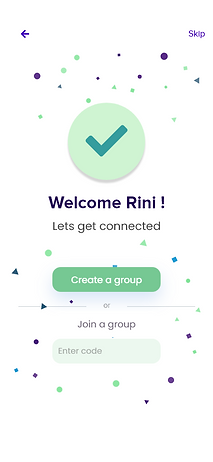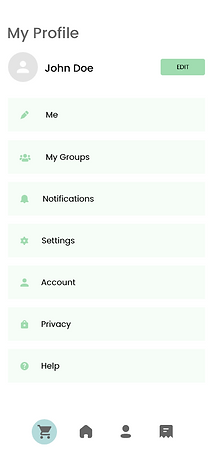.png)
summary
summary
summary
FoodLoop is a household food management tool that reduces wastage. It tracks grocery lists, suggests recipes for leftovers, monitors expiry dates, and logs items into a virtual pantry. This project was developed independently as part of a 16-week interaction design grad school course, with input from peers and professors.
links :
the problem
Poor communication among students living together can lead to increased food waste, resulting from aspirational healthy shopping, buying in bulk, poor planning and unique social dynamics.
.png)
.png)
.png)
.png)
the solution
Foodloop provides a collaborative platform that tackles food waste by facilitating effective communication and planning on both individual and communal levels. It does so by helping with grocery list tracking, suggesting recipes for leftover food, tracking the expiry dates, and logging items into their virtual pantry from the receipt.
needfinding interviews
Based on 6 needfinding interviews, key findings highlight user preferences and needs:
.png)
.png)
.png)
.png)
.png)
.png)
" I'm on a budget and busy! I need low effort and quick."
Users cared about food being wasted, either for monetary or moral reasons
Users struggle with tracking what has been bought and used and when it will expire.
" I buy with the intention of cooking but life gets busy and I'm not that great of a cook. I want to get better though. "
Users expressed that groceries would spoil quickly, 'Before I can get to them- they're moldy'. Awareness of how to store food correctly could prevent wastage.
Navigating social dynamics amongst housemates can mean having 'awkward' or 'confrontational' conversations surrounding chores and habits.
Awareness of food storage
Low cost & time commitment
Food log / Expiry date tracker
Waste tracker feedback tool
Easy cross-communication
Recipe generator
personas
I created three personas and one anti-persona as a tool to better understand the user. The profiles were merged to create a representative target group.
.png)
.png)
.png)
tool selection
The user's food cycle was mapped, highlighting key issues and devising corresponding solutions. This approach guided the selection of tool features, resulting in an end-to-end collaborative platform solution.
.png)
qoc diagrams
QOC (Question, Option, Criteria) diagrams were utilized to facilitate the final tool selection process. Based on prior research, 6 criteria were established and evaluated against 8 tool options, with the overarching question of reducing food waste among cohabitating users in mind. Design ideas were generated, considering factors such as time, effort, and cost. This visual representation proved effective in illustrating the decision-making process.
The QOC diagrams were utilized to analyze the 8 tools and narrow down the options, resulting in a final list.
.png)
final tool selection
.png)
storyboarding

storymapping
To enhance the journey mapping process, I developed a story map that depicted potential user interactions with the application, building upon the established user persona and storyboard.
user flow
Next, I created a user flow to map out the logic of the application.
%20(5).png)
design
.png)
I then created an interactive prototype on Figma.These screens are part of the onboarding process where the user either joins or creates a group to collaborate in.



.png)
Once within the group, the user can see their current shopping list and can add items either by a text box with auto-suggestions, from history or by scanning the barcode. Each item has an information on storage, prep and usage to help with best practices for longevity.




.png)
The inventory list highlights items currently in the pantry/fridge close to their date of expiration and notifies the user. The list can also be sorted by expiration date or food type. New items can be added by scanning the barcode too.



.png)
Lists can be exported into 'My Recipes' from which new ones can be generated. The user could also browse recipes and curate their own collection.




.png)
.png)
.png)
.png)
This project brought forward the importance of unsaid social etiquette and assumed mannerisms. It highlighted the pivotal role of social psychology and how that affects a person's actions, either intentionally or unintentionally.
.png)
It is also interesting to note that an app like this would be highly driven by the user's motivation to abide by their values. In the scenario, where it isn't only about the user's ideology but a group's, the decision is harder.
.png)
.png)
.png)
.png)